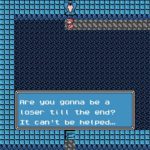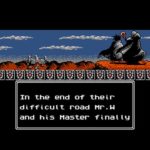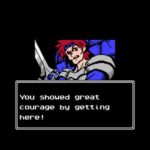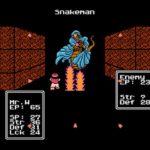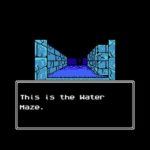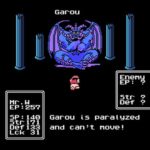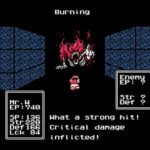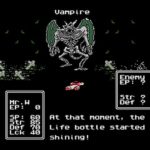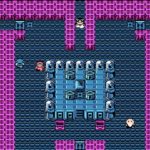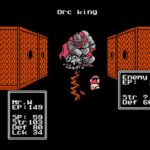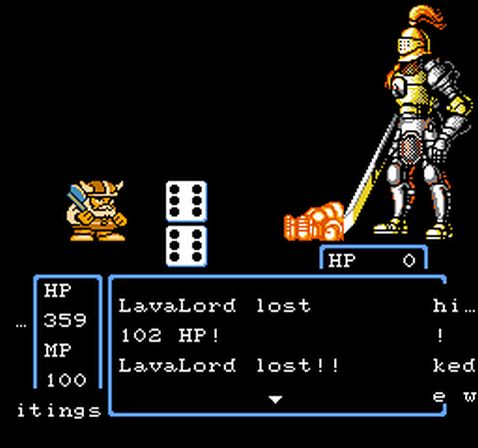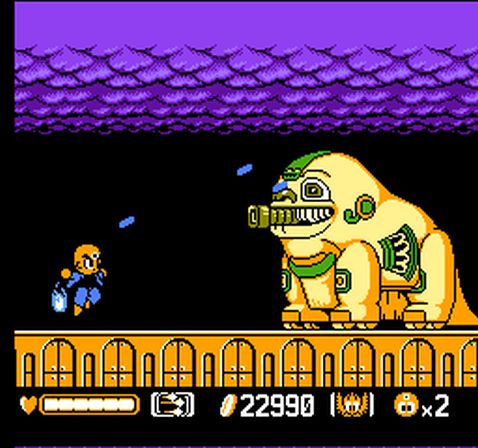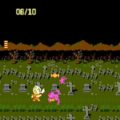Developer: Prism Zone Publisher: Namco Released: 09/22/1992 Genre: RPG
In Japan there were far too many Dragon Quest clones for the Famicom. I don’t mean games that were inspired by it; I mean titles that aside from slightly different art were virtually identical to Enix’s classic. It should have been illegal. So when a game that did something new came along it was notable. Namco’s Dream Master was a very late release for the Famicom but one that immediately stood out. Even among the burgeoning 16-bit RPGs of the time it was innovative and one that I consider one of the best on the system.
The kingdom of Oltaria enjoyed a long era of peace until the Black Master came along. The evil wizard snatches the soul of the kingdom’s princess and traps it in his Black Dream. Rather than submit the king employs the best Dream Masters in the world to save her but none return. Finally they summon the Dream Sage, the best in the world but he is too old. The task falls to you as his only disciple to enter the Black Dream, save the princess, and defeat the Black Master.
It’s a fairly involved story and one that is well told. The breakout star of this tale however is the Black Master. Equal parts villain and almost narrator the Black Master is a character. When not berating you for being an idiot who blindly walks into walls (I’ll get to that in a second) he is also kind enough to offer a preview of what’s to come in the next chapter and also refill your health slightly when you do well. The entire quest is a game to him. The guy is a real bastard but he also livens up what could have been a dull RPG.
Dream Master has seven chapters with each containing a central hub and one or more dungeons. The towns serve as little more than a place to get starting gear and information since there aren’t any shops or even currency. All equipment is found in the wild free of charge which is a nice change of pace. You’ll spend the vast majority of time in the various castles and dungeons.
These are where you’ll spend the majority of your time and it works a bit differently than in similar titles. Every new area is initially covered in fog that is revealed one step at time. Collisions with walls reduce your HP a few points and unfortunately outside of a few landmarks such as glowing items and the occasional NPC you’ll never know what you’re walking into. There is a slight puzzle element to dungeons as there are various items, switches, and false walls needed to progress. You can only carry eight items but luckily you can drop one at any time for later use. Managing your inventory to navigate potential roadblocks is essential and adds an element of fun to the proceedings.
Dream Master is even forward thinking in the way it handles random battles. Monsters roam like you and you can hear their footsteps. If it’s loud one is close by. You can avoid combat completely or control how often you do battle which also balances things out. There are a limited number of enemies per stage as well which means there is a level cap per chapter.
Inevitably you will enter combat and once again Dream Master is unique. There are a variety of options available; you have a normal attack, a charged move, can search enemies to find their weak point and stats, and can even restrain them. You can target individual body parts with most monsters having a single weak point. If hit it produces random effects such as enraging them, slowing them down, or even paralyzing them for a turn. The different attacks have varying strength and hit percentages which luck can change. In most games luck is a completely nebulous stat but here it governs hit, dodge, and evasion. There’s a tangible effect in battle; with higher luck your charge attacks will hit consistently while dodging spells is easier. Luck has a random value per fight and taking advantage of it will make some of the stronger enemies a breeze.
Overall Dream Master is about as long as most typical RPGs however you’ll breeze through it quickly. Most games in the genre pad their length through grinding yet here it is completely unnecessary. Even without grinding most encounters become simple and repetitive once you’ve learned an enemy’s weak point. Most chapters provide high level equipment that make their ending boss battles easier. The late game picks up but by that point your strong most enemies die in two or three turns.
Death carries a steep penalty since it throws you back to the beginning of the current chapter. You’ll lose all progress too. Up until chapter five they are so short it isn’t as punishing. These factors reduce what would normally be a 30 hour game to a brisk 15 or so. But you know what? The game is much better for it.
While the overworld graphics are nothing to write home about the menagerie of enemies is where the game shines. There is a large variety of enemies with each chapter featuring its own unique set. The art is great and there are even well animated spell effects. Important story moments are shown using semi-regular cutscenes. The music is pretty good although the overall soundtrack is not diverse.
In Closing
Highly unique and definitely innovative for its time Dream Master is one of my favorite 8-bit RPGs. Hell I would even say RPGs in general. It avoids many of the trappings of the genre and is highly replayable even after completion. Although it never left Japan there is an excellent fan translation available, allowing many more to enjoy this great game.


